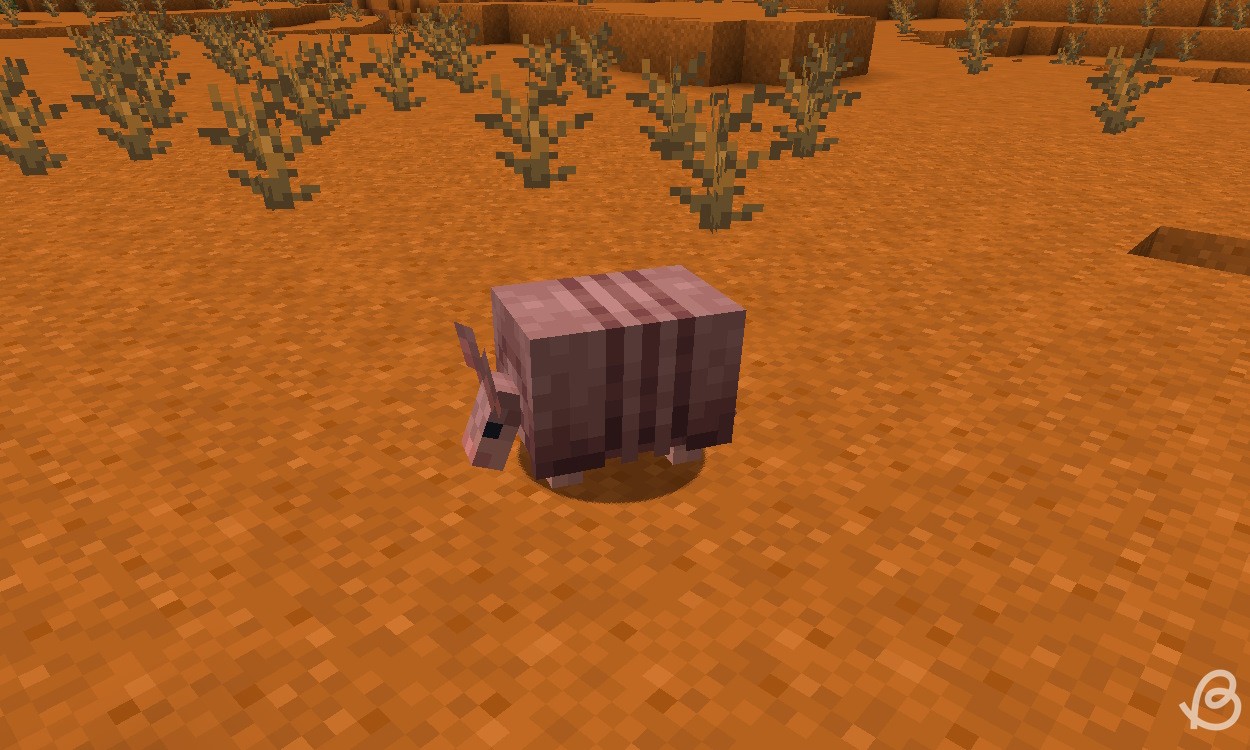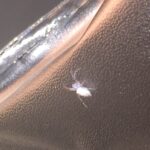Minecraft is teeming with diverse mobs, each adding a unique flavor to the game’s world. While some are fearsome foes, many players are drawn to the adorable creatures they can interact with and potentially keep close. Among the charming additions is the armadillo, introduced in Minecraft’s 1.20.5 update. This guide will delve into everything you need to know about armadillos, focusing on whether you can truly consider them pets in your Minecraft adventures.
Understanding the Armadillo in Minecraft
The armadillo is a neutral mob instantly recognizable by its cute appearance and unique defensive mechanism. When feeling threatened, it will curl into a ball, a behavior triggered by several factors:
- Sprinting Players: Approaching an armadillo at full speed will spook it.
- Mounted Players or Vehicles: Riding a horse or driving a vehicle nearby is also considered a threat.
- Undead Mobs: Zombies, wither skeletons, and other undead creatures will cause armadillos to roll up in defense.
This reaction occurs even if the perceived threat is roughly 5 to 7 blocks away. While curled up, the armadillo remains stationary and does not eat. Interestingly, armadillos will not curl up if they are in water, airborne, fleeing, or being led.
An armadillo will uncurl after about three seconds if it no longer senses danger. This endearing mob was actually the community’s favorite, winning the Minecraft Mob Vote in 2023 against the crab and the penguin. This victory speaks volumes about the players’ desire for more charming and interactive creatures in the game.
Where to Find Armadillos in Minecraft Biomes
Armadillos are creatures of warm climates, naturally spawning in savanna and badlands biomes, including all their variations. However, they are considered relatively rare mobs. So, finding them may require a dedicated expedition into these biome types. Be prepared to explore extensively within savanna and badlands regions to spot a few of these delightful creatures.
Armadillo Characteristics: Health, Breeding, and Scutes
Now that we’ve established what armadillos are and where to locate them, let’s explore their core properties, including their health, breeding behaviors, and valuable drops.
Armadillo Health and Defense
Like many smaller mobs in Minecraft, armadillos have a modest health pool. They possess 12 health points, equivalent to six hearts. This makes them quite vulnerable to attacks and environmental hazards.
However, their curled-up state provides a natural defense. When rolled into a ball, their hard shell offers significant protection, rendering them immune to weak attacks like player punches. You might even see them momentarily peek out from their shell to assess the surroundings for lingering threats.
Despite their shell, armadillos are not immune to all dangers. They are susceptible to fall damage and will not survive falls from heights of 15 blocks or more. Fire and lava are also harmful, and they can drown in water, just like many other land-based mobs. If an armadillo sustains damage, it will curl up for an extended duration compared to when simply frightened.
Breeding Armadillos for More Cute Companions
Armadillos may be uncommon in the wild, but thankfully, they are breedable. This allows you to cultivate your own population of these charming mobs and ensures a renewable source of their unique drops, which we’ll discuss shortly. To breed armadillos, you will need two adult armadillos and spider eyes, their preferred food.
Spider eyes are exclusively obtained by killing spider mobs. Simply defeating spiders by any means won’t guarantee a drop; they only drop spider eyes when defeated by a player or a tamed wolf.
Using the Looting enchantment can increase both the chance and the number of spider eyes dropped by spiders. Witches and desert pyramid chests can also be sources of spider eyes, offering alternative acquisition methods.
Once you have spider eyes, right-clicking on adult armadillos with them will initiate love mode. The two armadillos will move closer, and shortly, a baby armadillo will appear.
Baby armadillos take some time to mature into adults, but feeding them more spider eyes will accelerate their growth. It’s crucial to note that armadillos will not accept food or breed while curled up. You must wait for their defensive cooldown to subside before attempting to breed them again.
Interestingly, armadillos’ fondness for spider eyes has a side effect: spiders and cave spiders are naturally afraid of armadillos, similar to how skeletons fear wolves. Having armadillos around your base can effectively deter spider intrusions, providing a unique form of mob control.
Harvesting Armadillo Scutes: Are They Useful?
Now, let’s explore the most practically valuable aspect of armadillos: their drops. Without harming the armadillo, you can obtain armadillo scutes by using a brush tool on adult armadillos.
Brushing an armadillo, whether curled or uncurled, will yield one scute. There is no cooldown on brushing; you can repeatedly brush an armadillo to collect scutes. However, there is a trade-off.
Using a brush depletes its durability relatively quickly. An unenchanted brush might only yield about 4-5 scutes per armadillo before breaking.
You’ll need a considerable number of scutes to craft wolf armor, requiring at least two unenchanted brushes to gather enough for just one piece of armor. Applying the Unbreaking enchantment to your brush will significantly extend its lifespan, making scute collection more efficient. Furthermore, dispensers filled with brushes can automate scute harvesting, offering a more hands-off approach.
Armadillos also naturally shed scutes occasionally, dropping one scute roughly every 5 to 10 minutes. Scutes are also used to repair damaged wolf armor. Simply hold scutes in your hand and use them on a wolf wearing damaged armor to restore 8 durability points.
Breeding armadillos also provides a small amount of experience points. Notably, experience is only gained from killing adult armadillos; slaying baby armadillos yields no XP.
So, Can You Keep Armadillos as Pets?
While you cannot tame armadillos in the traditional sense like wolves or cats to make them follow you around and offer combat support, you can certainly keep them in a designated area and breed them. They won’t sit on your lap or fetch items, but they bring a unique charm to your Minecraft world.
You can lure armadillos using spider eyes, guiding them to a pen or enclosure. By breeding them, you can establish a population of armadillos near your base, providing a consistent supply of scutes for wolf armor and adding a delightful, albeit not conventionally “pet-like,” presence to your Minecraft homestead. They are more like livestock or decorative mobs than loyal companions.
In conclusion, while armadillos may not be pets in the classic sense of tamed, following companions, they offer a unique and valuable addition to Minecraft. Their scutes are essential for wolf armor, and their presence can even deter spiders. So, while you can’t “pet” them in the same way as a dog, you can certainly “keep” armadillos and appreciate their unique contributions to your Minecraft experience. What are your thoughts on the armadillo? Share your experiences in the comments below!

